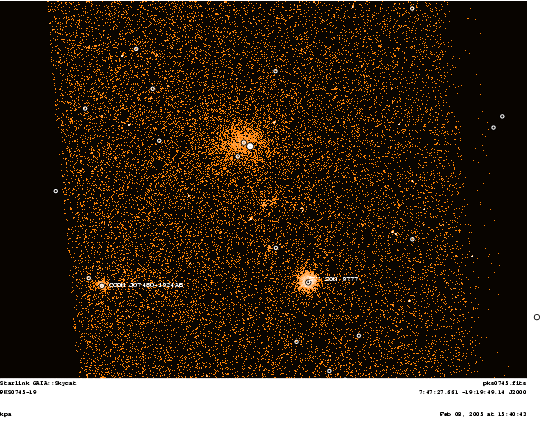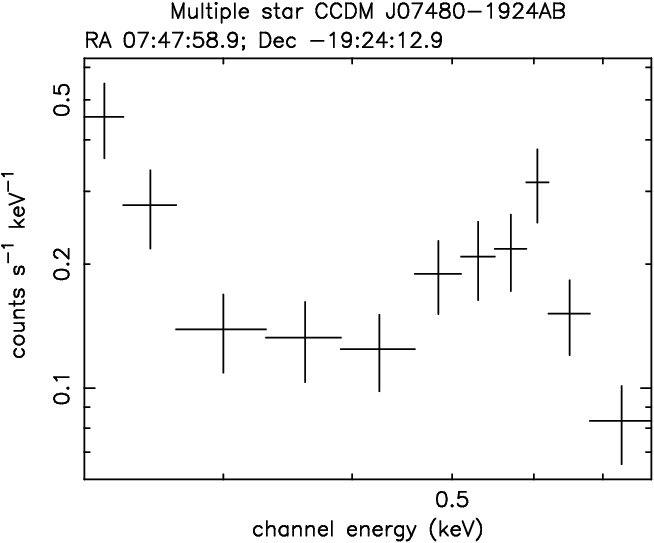PKS0745-19 seq=00051650001
The outputs of the SDC pipeline consists of the Level 1 data and
does not include currently the clean event files.
The screening criteria are currently being worked out by the instrument
team to optimize the outputs.
Here are described the steps to create the clean event files and extract
spectra for sources in the field.
but the variable star is very piled-up within these data and it
appears that the emission is all optical light.
mkdir pks074519
xrtpipeline gtiexpr="SAA==0&&Vod1>=29.8&&Vod1<=30.25&&Vod2>=29.30&&Vod2<=29.80&&
Vrd1>=16.40&&Vrd1<=16.80&&Vrd2>=16.45&&Vrd2<=16.90&&Vsub>=-0.1&&Vsub<=0.1&&
Vbackjun>=-0.1&&Vbackjun<=0.1&&BaseLin1>=0.1&&BaseLin1<=0.4&&BaseLin2>=-0.1&&
BaseLin2<=0.1"
You will be prompted for :
This is shown below.
===========================================================
Running SWIFT XRT pipeline
Task: xrtpipeline Version: 0.7.5 Release Date: 2004-12-17
============================================================
Source RA position (POINT to use optical axis direction) (degrees or hh mm ss.s) [POINT] :
Source DEC position (POINT to use optical axis direction) (degrees or dd mm ss.s) [POINT] :
Target Archive Directory Path [00100585001] : 00051650001
Stem for FITS input files [i.e. sw00000000000] [st00100585001] : sw00051650001
Directory for outputs [GRB041223] : pks074519


The exposure is very short 2639.6 sec and the iron line is not required in the fitting
Model: ( powerlaw<1> + mekal<2> )wabs<3>
Model Fit Model Component Parameter Unit Value
par par comp
1 1 1 powerlaw PhoIndex 1.96488 +/- 0.263203
2 2 1 powerlaw norm 7.581451E-03 +/- 0.186366E-02
3 4 2 mekal kT keV 6.79744 +/- 2.15519
4 5 2 mekal nH cm-3 1.00000 frozen
5 6 2 mekal Abundanc 1.00000 frozen
6 7 2 mekal Redshift 0.102800 frozen
7 8 2 mekal Switch 1.00000 frozen
8 9 2 mekal norm 1.989246E-02 +/- 0.639439E-02
9 3 3 wabs nH 10^22 0.501647 +/- 0.454076E-01
---------------------------------------------------------------------------
---------------------------------------------------------------------------
Chi-Squared = 153.1687 using 117 PHA bins.
Reduced chi-squared = 1.367578 for 112 degrees of freedom
Null hypothesis probability = 5.955E-03


If you have a question about Swift, please contact us via the Feedback form.

